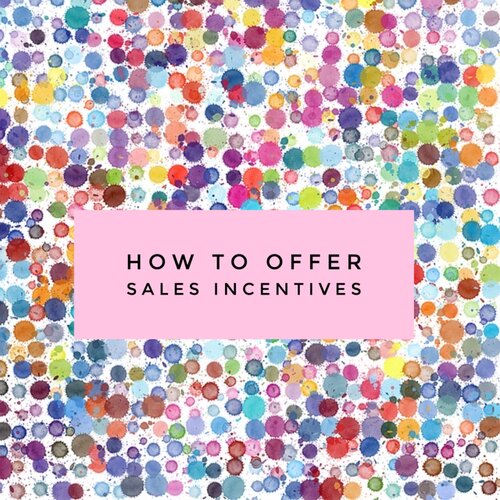by Carolyn Edlund
Use these strategies to construct an offer your collectors can’t resist.

We all want to get a great price. Everybody loves a sale, and discounting is a common way to jump start sales. Is it wrong for artists to offer discounts on their work? No. You might want to have a Black Friday sale to boost your fourth quarter revenue. Perhaps you decide to run a temporary show special at a fair or festival. Or you may want to clear out some older inventory at prices that will appeal to shoppers. How you sell and the prices you offer are up to you. Some artists never give a discount, and that’s perfectly fine. Other artists make the choice to do so.
The Downside of Discounting
What is harmful, however, is the practice of running sales so often that you devalue your brand and teach your customers they can always get a better deal than your current price. This is what has happened to many large retailers, who are forever running sales just to pull customers in the door. They’re stuck in a vicious cycle of their own making, because savvy shoppers only turn out when prices are low.
Sometimes you’ll see online galleries and marketplaces offering immediate discounts in pop-up windows as soon as visitors come to their site. They do this in exchange for getting you to sign up for their mailing list. I’m not a big fan of this, because it gives the impression that like the big retailers, regular prices are set artificially high and discounts are always available.
Selling art really isn’t about price. Your art is not a commodity item, and you don’t have to lower your prices to sell. Building perceived value is a better way to appeal to collectors who are willing and able to pay what your work is worth. Present your art as worth more and position yourself to the right audience. Going for bargain hunters is a bad idea. They only want a good deal, and they don’t tend to be loyal customers.
Shipping Incentives
Are there ways to incentivize purchasing without resorting to discounts? Yes. Free shipping is one common tactic that is used to move online shoppers toward the sale. This is popular because pretty much everyone hates to pay shipping costs. When calculating your prices, include wiggle room to accommodate incentives such as shipping costs. Building this cost into the price of your work allows you to offer free shipping on the back end of the sale.
What if shipping is expensive, and you cannot absorb the whole cost? You might offer one flat-price for shipping regardless of how many items are purchased. Or give free or discounted shipping for orders over a certain purchase amount. Sometimes, artists include a coupon with a shipped order that offers free or discounted shipping on the next order.
Bonus Incentives
Some brands never give discounts, like the big cosmetics companies. Instead of reducing prices, they offer a free gift with a purchase, such as a makeup bag with sample sizes of their other products. This is a great way to lure customers into trying and buying even more from them. As an artist, you can use a form of this strategy, too.
Sweeten the deal by offering an additional item when your art is purchased. Perhaps you’ll include a free lighted base with the sale of a sculpture, or offer free delivery and installation of a piece of art. If you sell handmade leather goods, you might include a small bottle of leather conditioner as a free add-on. You could offer complimentary gift wrapping or include a free pack of cards and envelopes featuring your artwork on the front. These extras are appreciated, and can make the difference in closing the sale.
Financing Incentives
Another incentive to get buyers to say yes is by offering financing arrangements where payments are made over time. Or, you could be very flexible with approval and returns. If they don’t love the art on their wall, they can return it with no questions asked. Sometimes art is offered through a rental arrangement, with a monthly fee that can be applied toward purchase if the customer wants to keep it.
Every artist is unique. What you decide to do in the form of discounting or offering incentives for a sale is a business decision that you should make depending on your own circumstances, needs and pricing formula.


Hi Carol. Great article! I have regularly used a price of offering ‘gift’ discount to regular collectors who purchase multiples. I currently have a new client that purchase a small painting for $1200 and then wanted a larger custom piece. I priced it at $4000 (which was not unreasonable). After talking, they realized that they really wanted 2 more… but we’re hesitant about spending $8000. When I offered a 10% discount if they did the both… they jumped on it. Now, frankly they may have done it without the discount, but this turned out to be a win-win.
Great move, Steven. Customers love special consideration when they are making a multiple purchase. I’m sure it was well worth the effort to work with them!